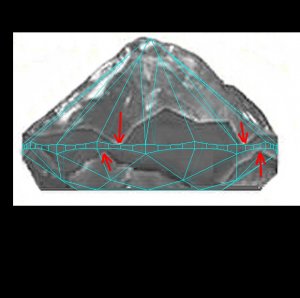- Joined
- Mar 28, 2001
- Messages
- 6,341
Hi Serg,
Peace,
Just curious ... how much digging is allowed on the pavilion in GIA and AGS gold systems? I''ve been focusing on crown painting and digging as that''s what I run into more.Date: 11/7/2008 11:45:06 AM
Author: Serg
Rhino,
Does this stone have Pavilion digit-out?
Not enought that would have caused it to take a hit in the GIA system. It was an Ex grade. I may have a Helium on it with precise measurements.
If yes, Optical Symmetry is irrelevant explanation for downgrade
Diamond with Digit-out or painting could have High level symmetry .
I understand your point because I have seen (and have scans of) diamonds with painting and digging that don''t make Ex or Ideal with the high level symmetry you''re talking about. To my knowledge not the case here but even if it were Serg ... the leakage under the table is not being caused by painting and digging. Painting and digging would impact brightness around the crown. Leakage however, under the table would not be caused by the painting/digging. All of it however impacting the PGS grade.
P/s for Karl. This is not example what PGS sensitive to symmetry. ( Most probably digit-out is reason)
Peace,








300x240.png)